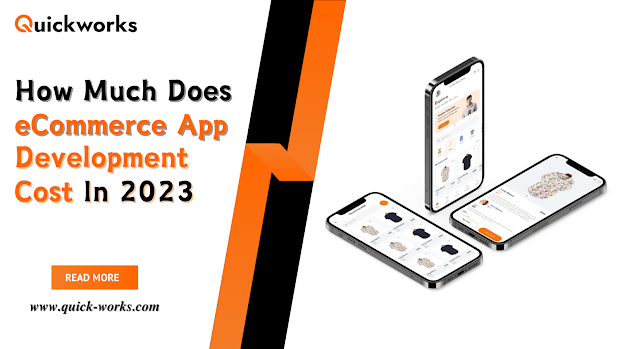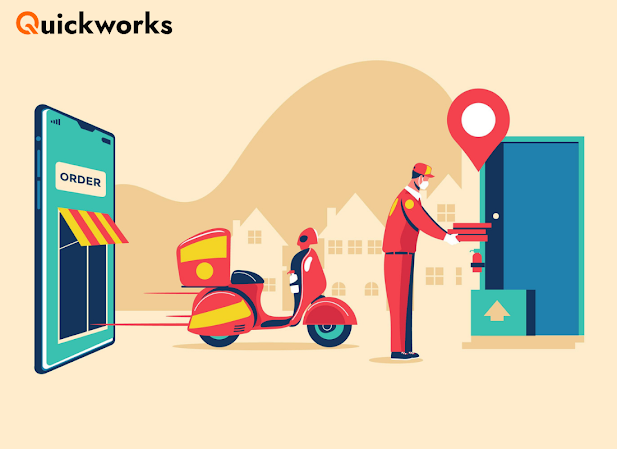How Much Does eCommerce App Development Cost In 2023
It was eCommerce apps for commercial sales that initiated the history of online shopping. However, mobile traffic eventually surpassed web traffic, and these platforms developed into mobile apps for eCommerce. Nearly 60% of consumers make online transactions these days using their phones, and the majority of businesses launch their mobile apps straight away.
Even with the seeming hesitation, now is an excellent moment to launch an eCommerce business. The billions of users who would like to purchase online are now unmet by the retail mobile app market; they have to cope with out-of-stock merchandise, shipping delays, and higher fees because they have no viable competitors. Your eCommerce app development idea can help local vendors meet online while millions of them are having trouble finding customers. Let's get more into this!
6 Factors That Affect ECommerce App Development Cost
1. User Interface and Design
The success of an eCommerce app solution is mostly dependent on its design and user experience. Software with an intricately developed and user-friendly user interface (UI) can attract and retain users, while a poorly designed program may quickly lose them. Investing in a high-quality design and user-friendly interface is essential to ensuring that the app meets the needs and preferences of its users.
Depending on the intricacy of the design and the designer's experience, the cost of the design and user interface for an eCommerce app can change. Compared to sophisticated and complex designs that take more time and effort to create, basic and minimalist designs could be more affordable. To ensure a top-notch design and user interface, businesses should work with seasoned designers who understand the needs and preferences of their target audience.
2. Features and Capabilities
When creating an app, firms should give careful thought to the features and functioning of an eCommerce app. The app's functioning is influenced by both its features and its functionality. assesses whether it meets the needs of the intended audience and provides a user-friendly experience.
When selecting features and functionality for an eCommerce app, it's critical to strike a balance between providing a rich user experience and keeping development costs within a reasonable budget.
Focusing on the core features and functionality that will provide the best possible user experience is essential. Some of the main features that might drive up the cost of eCommerce app development include in-app messaging, social network integration, and third-party integrations like chatbots, different payment processors, and delivery companies. Businesses can interact with their customers through push notifications, chatbots, and in-app messaging, but these tools need more development and upkeep to make sure they work properly.
3. Development Platform
The development platform selection is crucial for white-label eCommerce app design since it can have a significant impact on development expenses. Whether creating native or hybrid applications, there are numerous development platforms available.
Businesses should think about both their unique needs and the needs of their customers when selecting a platform for the creation of eCommerce apps. If the program needs to use specific hardware or software features or requires a lot of capability, a native app can be the best option. A hybrid app might be a smart option if it has to be produced at a competitive cost and released on several platforms. Development expenses are greatly impacted by the usage of pre-made open-source eCommerce platforms for mobile apps, such as Quickdelivery. The ready-made platform you select for your backend also affects eCommerce app development costs.
Native apps must be updated for every platform independently, they could have higher overhead expenses. Hybrid apps may be launched on many platforms using the same codebase, but they might require less maintenance.
4. Third-Party Integrations
When developing an eCommerce app, third-party connectors are crucial to take into account. Incorporating payment gateways, shipping providers, and other external services (such as SMS) into your app can yield substantial benefits by offering users safe and easy ways to pay and receive their orders, along with real-time updates about their progress. But there's a price for these integrations as well.
Depending on the complexity involved, integrating third-party services can come at a different cost. Additionally, the integration of these services with eCommerce app solutions may necessitate custom development, which can be costly. Additionally, the complexity of an app increases with the addition of integrations, which may result in increased development, maintenance, and support expenses.
5. Safety and Adherence
When going for ecommerce app development, security and compliance are essential considerations. Consumers anticipate that their money and personal information will be kept private, and companies are obligated to safeguard client data. Failing to do so could have consequences for one's finances and reputation in addition to legal issues. Thus, ensuring that the white-label eCommerce app is secure and compliant with relevant regulations is essential.
The cost of ensuring that eCommerce software is secure and compliant may vary depending on the required level of security and compliance. Basic security measures like safe password policies, SSL/TLS encryption, and two-factor authentication are required for all eCommerce apps and may be installed at a reasonable cost. The cost of developing and maintaining eCommerce software, however, could increase significantly if it requires more advanced security features, such as biometric authentication or end-to-end encryption. The amount of security required will depend on the kind of data being handled and the level of risk associated with the application.
6. Maintenance and Support
When creating an eCommerce app solution, maintenance and support fees should be taken into account as continuous expenses. An app needs constant updates and upkeep to stay secure, functioning, and compatible with new iOS and Android releases even after it is released. When an app is neglected, it may have bugs, outages, and security flaws that harm its reputation and cause users to have a bad app experience.
The intricacy of the application and the degree of support needed will determine the cost of upkeep and support. More sophisticated eCommerce systems might need constant upkeep and assistance from a committed group of developers and support staff.
To Wrap Up


Great insights! This blog clearly explains how much eCommerce app development can cost in 2023 and what factors influence the pricing. Understanding these details really helps businesses plan better and avoid unexpected expenses. As an on demand app development company, we see how the right features, technology stack, and development approach can make a big difference in overall cost and performance. Thanks for sharing such useful information!
ReplyDelete